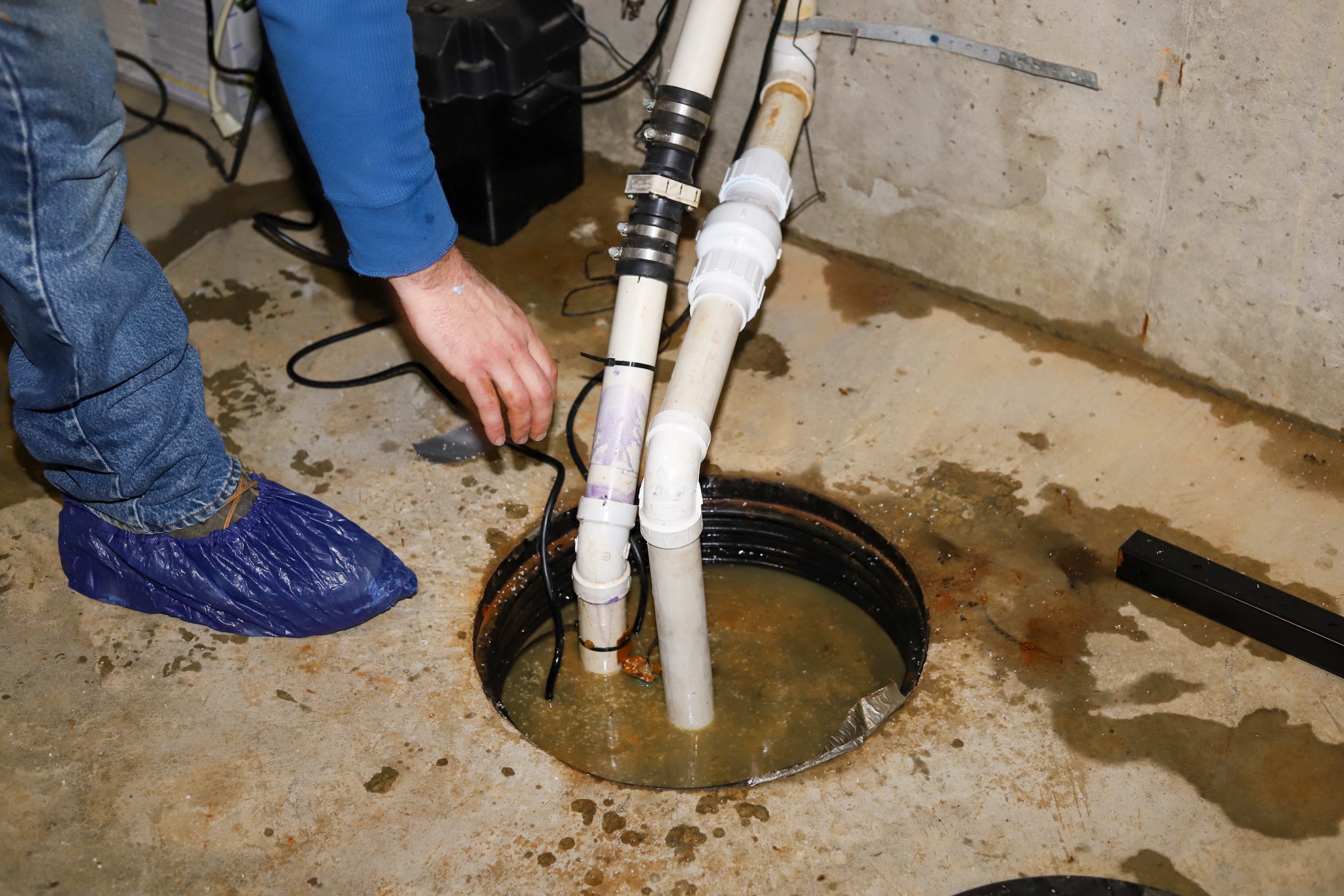Have you been trying to find suggestions involving Keep Your Sump Pump Clean, It'll Keep You Dry?

Sump pumps are essential parts in many homes, particularly in locations susceptible to flooding or extreme wetness. They help avoid water damage by successfully removing excess water from cellars or crawl spaces. Nevertheless, like any other home appliance, sump pumps require routine maintenance to guarantee they function effectively when required one of the most. Cleaning your sump pump is a vital part of its maintenance, and understanding just how to do it correctly can conserve you from costly repair work and prospective catastrophes.
Intro
Preserving a tidy sump pump is essential for its appropriate functioning and durability. Ignoring this important task can bring about blockages, breakdowns, and eventually, water damages to your residential or commercial property. As a result, finding out how to cleanse a sump pump is vital for homeowners who rely upon these tools to keep their basements completely dry and protected.
Comprehending the Sump Pump
Before diving into the cleaning procedure, it's important to have a basic understanding of how a sump pump functions. Usually set up in a pit or container listed below the cellar floor, a sump pump consists of a number of key elements, consisting of a pump, a float button, and a discharge pipeline. When water builds up in the pit, the float switch triggers the pump, which after that pumps the water out via the discharge pipeline, away from the structure's structure.
Indicators of a Dirty Sump Pump
Recognizing when your sump pump requires cleaning is important for protecting against potential malfunctions. Some common signs that suggest a dirty sump pump consist of unusual sounds during procedure, minimized water flow, and visible particles in the pit. If you discover any of these symptoms, it's essential to clean your sump pump promptly to stay clear of any kind of additional issues.
Preparing for Cleaning
Prior to you begin cleansing your sump pump, it's necessary to take some security preventative measures. Start by turning off the power to the pump to stay clear of any electrical accidents. Furthermore, put on appropriate protective equipment, such as handwear covers and safety glasses, to shield on your own from dust, debris, and prospective pathogens.
Step-by-step Overview to Cleaning Up a Sump Pump
Turning off the Power
Begin by detaching the power supply to the sump pump to prevent any accidents while cleaning.
Eliminating Particles and Dirt
Make use of a bucket or a scoop to remove any kind of visible particles, dust, or sediment from the sump pit. Dispose of the particles properly to stop it from clogging the pump or the discharge pipeline.
Cleaning up the Pump and Float Switch Over
Once the pit is free from particles, very carefully remove the pump from the pit. Check the pump and the float button for any signs of damage or wear. Utilize a soft brush or fabric to cleanse the surface areas and get rid of any collected gunk.
Flushing the System
After cleaning up the pump and float button, purge the sump pit with tidy water to eliminate any staying dirt or debris. This will certainly assist guarantee that the pump operates efficiently and successfully.
Looking For Appropriate Functioning
Prior to re-installing the pump, do a quick test to make certain that the float button activates the pump appropriately. Pour some water right into the sump pit and observe the pump's procedure. If whatever is functioning properly, you can rebuild the pump and reconnect the power supply.
Maintenance Tips to Keep Your Sump Pump Clean
Along with routine cleaning, there are several upkeep tips you can comply with to maintain your sump pump in optimal condition:
Final thought
Cleansing your sump pump is an essential element of its upkeep and guarantees that it runs effectively when you need it the most. By complying with the actions laid out in this overview and including routine maintenance into your regimen, you can expand the life-span of your sump pump and protect your home from water damages.
6 STEPS ON HOW TO CLEAN A SUMP PUMP PROPERLY
UNDERSTANDING SUMP PUMPS
Your sump pump plays a crucial role in protecting your home by managing and removing excess water. It primarily functions as a “shield”, guarding your basement against the damaging effects of water accumulation. The pump is housed in a sump pit in the lowest part of your basement, and its job is to pump out any water that collects there.
During heavy rainfalls or when snow melts rapidly, water can infiltrate your basement, posing potential risks like flooding, structural damage, and harmful mold growth. Here, the sump pump springs into action, pumping out the intruding water and directing it away from your home.
SAFETY FIRST
Before cleaning, remember to prioritize safety. Disconnect the sump pump from the power source to prevent any accidental electric shocks. Also, wear sturdy gloves to protect your hands from any sharp or dirty components within the pump.
REMOVE THE SUMP PUMP
After ensuring your safety, the next step is to remove the sump pump from its pit. Doing this might require careful maneuvering as you don’t want to damage any pump components. Once removed, clean the sump pit to remove any accumulated debris or sludge.
INSPECT THE PUMP
Inspect the pump for any visible signs of wear or damage. Check the power cord, float switch, and impeller housing. If any components look worn out or damaged, consider replacing them to ensure optimal performance.
CLEAN THE PUMP
Thoroughly clean the pump with warm, soapy water. Make sure to rid it of any dirt, gravel, or other debris that might impede its performance. You can use a toothbrush to clean the small, hard-to-reach parts of the pump.
REINSTALL THE SUMP PUMP
Reinstall the pump into the sump pit Make sure it’s positioned correctly to remove the water effectively Once it’s back in place, reconnect it to the power source TEST THE PUMP
Finally, pour some water into the pit to ensure the pump works correctly. It should start automatically and begin pumping out the water; if it doesn’t, check the power source and the positioning of the pump.
Remember, while cleaning your sump pump is an essential part of home maintenance, hiring a professional plumber for a thorough inspection and cleaning at least once a year is also important. This will ensure that your pump is in optimal condition, ready to protect your home from potential water damage.
BEST PRACTICES FOR CLEANING SUMP PUMP DISCHARGE PIPES
Regular Inspection: Regularly inspect your discharge pipes, especially during heavy rainfall or snowmelt periods. Look for any signs of blockage or damage. Early detection of problems can prevent serious issues down the line. Periodic Cleaning: Over time, sediment and debris can accumulate in the discharge pipes, impeding the flow of water. Regular cleaning helps keep the pipes clear and functioning efficiently. You can use a high-pressure water jet to effectively clean the pipes. Insulation During Winter: In colder climates, discharge pipes can freeze, blocking the outflow of water. Protect your discharge pipes from freezing temperatures by insulating them with foam pipe insulation. This will ensure the sump pump can continue to discharge water even in freezing conditions. Proper Positioning: The discharge pipe should be positioned to direct water away from your home’s foundation. Improper positioning can lead to water seeping back into the basement. Ensure the pipe is long enough and angled correctly. Installation of a Check Valve: A check valve prevents water from flowing back into your sump pit after the pump has pushed it out. Installing a check valve helps maintain the efficiency of your sump pump and reduces the risk of flooding. Minimize Pipe Turns: Every curve or turn in the discharge pipe can decrease the efficiency of water flow. By minimizing turns and bends in your discharge pipe, you can increase the efficiency of your sump pump. https://www.fullspeedplumbing.com/how-to-clean-a-sump-pump-properly9999/

I'm very interested by and I hope you enjoyed the entire piece. Loved our blog? Please share it. Let someone else locate it. We enjoy your readership.
Further Details
 Neve Campbell Then & Now!
Neve Campbell Then & Now! Hallie Eisenberg Then & Now!
Hallie Eisenberg Then & Now! Val Kilmer Then & Now!
Val Kilmer Then & Now! Pauley Perrette Then & Now!
Pauley Perrette Then & Now! Robin McGraw Then & Now!
Robin McGraw Then & Now!